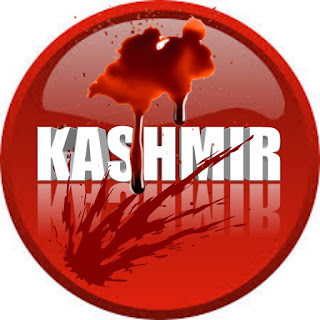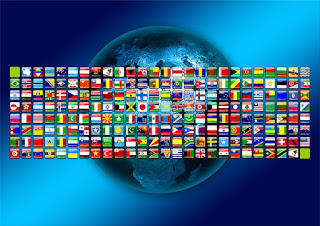Introduction
kashmir is one of the conflicts implicated in the current "war" of the United States and its allies against certain form of radical Islam. A long-term solution to the conflict in kashmir cannot be found without consideration of the wishes of the kashmir people the three-option plebiscite,giving kashmir a choice among accession to india, accession to Pakistan, or full soverenignty,is an avenue that must be explored .The united Nations should observe as the organizer of such a plebiscite and should be the ultimate guarantor of its results.Convincing pakistan and india of the ultimate wisdom of such a course can be part of current negotiation around the event in Afghanistan that now demand our attention.Kashmir Issue In
UNO:
However it bodes well to take a full breath and analyze key certainties to understand what is happening. Numerous columnists overlook that there is no state in India named Kashmir. The territory of Jammu and Kashmir incorporates three unmistakable districts: Buddhist Ladakh, Hindu Jammu and Muslim Kashmir. These contain 62.3%, 22.7% and 15% of the zone of the state. This implies Kashmir is only 15% of the all out region of the state. The tables are turned with regards to socioeconomics. Kashmir is most crowded, containing 53.9% of the state populace with Jammu framing 43.7% and Ladakh a simple 2.3% offer.
WHAT INDIA LIES BEHIND OF KASHMIR ISSUE
Look down to peruse more on this 360° arrangement
The insights above uncover a significant point that the Indian, Pakistani and universal media perpetually miss. Kashmir is only one of the three locales of an exceptionally various state. Conflating Ladakh and Jammu with Kashmir is messy, inaccurate and deluding. All in all, for what reason do most writers do it? Obliviousness as opposed to malevolence is the most likely answer.
The KASHMIR Roots of Conflict
 In the same way as other a political element, the advanced province of Jammu and Kashmir is a verifiable mishap. During the perishing days of the Mughal Empire, the loathsome Sikhs set up their own brief realm. They initially vanquished Jammu and afterward extended to Kashmir. Beginning in 1834, Zorawar Singh Kahluria, the Dogra general of the Sikhs, drove venturesome battles in high elevation to overcome Buddhist Ladakh and Shia Baltistan. In 1841, Kahluria wound up with a spear in his chest when he endeavored to overcome western Tibet, yet the Dogras presently controlled a swathe of an area, which is right now shared between India, Pakistan and China.
In the same way as other a political element, the advanced province of Jammu and Kashmir is a verifiable mishap. During the perishing days of the Mughal Empire, the loathsome Sikhs set up their own brief realm. They initially vanquished Jammu and afterward extended to Kashmir. Beginning in 1834, Zorawar Singh Kahluria, the Dogra general of the Sikhs, drove venturesome battles in high elevation to overcome Buddhist Ladakh and Shia Baltistan. In 1841, Kahluria wound up with a spear in his chest when he endeavored to overcome western Tibet, yet the Dogras presently controlled a swathe of an area, which is right now shared between India, Pakistan and China.During the 1840s, the Sikh Empire broke down. The Dogras drove by Gulab Singh held onto their possibility. In 1846, the Sikhs and the British came to perceive Dogra sway and they ended up one of the 584 regal conditions of British India. Singh and his offspring ruled over a Muslim-dominant part kingdom while paying regard to the British. Hari Singh, the last Dogra ruler, was heavy, indulgent and useless. This previous page kid to Lord Curzon was coerced by a Parisian whore for a royal aggregate of £300,000 in 1921, or $16 million according to present-day standards. Obviously, such depravity didn't fascinate Singh to his subjects.
While most imperial families joined recently free India or Pakistan, Hari Singh had fantasies and dreams of loftiness. He needed to manage a Himalayan Switzerland. Pakistan considered Muslim-to be Kashmir as a characteristic piece of its country building venture and dispatched Pashtun tribesmen to wrest it. In a frenzy, the Dogra ruler marked the Instrument of Accession on October 26, 1947, and Indian soldiers arrived in Srinagar. Indeed, even as Indian soldiers were pushing back Pashtun tribesmen, Jawaharlal Nehru, India's first executive, took the issue to the United Nations on January 1, 1948.
Almost four months after the fact, the UN Security Council required a plebiscite in Jammu and Kashmir. In the first place, Pakistan should pull back Pashtun tribesmen and its nationals. Second, India would then diminish its powers "logically to the base quality required for the help of the common power in the upkeep of peace." Then, there would be a plebiscite that would choose where the state would go. The goals stays stillborn till this date in light of the fact that neither one of the parties has tailed it.
Rather than soldiers diminishing in Kashmir according to the goals, they have just expanded throughout the years. The explanation is straightforward: Neither Pakistan nor India trust one another. In addition, for every one of them, the Kashmir Valley is a fundamental piece of its country building venture. For Pakistan, Muslim-larger part Kashmir must be a piece of its domain. For multicultural India, Kashmir as a piece of its country demonstrates this is home to differing networks who are all piece of a dazzling mosaic. Kashmir is an existential issue that is attached to the very character of the two countries.
Since freedom, India and Pakistan have conflicted more than once over Kashmir. The main war started in October 1947 and finished in January 1949. It prompted the accepted division of the district along the supposed Line of Control (LoC), the informal fringe that has gone on until today. The two nations battled two full-scale wars in 1965 and 1971. The second of the wars prompted the making of Bangladesh. They likewise conflicted over Siachen and Kargil in 1985 and 1999 separately. There have been various different events when pressures have run intense.
Today, the previous Dogra province of Jammu and Kashmir is partitioned between India, Pakistan and China. Pakistan controls the northern exceptional region of Gilgit-Baltistan and the sickle-formed Azad Kashmir sub-locale since 1949. It is all around recorded that Pakistan with its convention of military tyrannies has steadily changed the demography of both these districts. It has additionally surrendered Shaksgam Valley to China in 1963 out of a push to seal a partnership with the Middle Kingdom in the fallout of the 1962 Indo-China War.
After its resonating triumph in 1962, China assumed responsibility for Aksai Chin from India. Up to that point, this had been a piece of Ladakh. Socially, this piece of India had profound relations with Tibet for quite a long time. China initially attacked Tibet in 1950 and the Dalai Lama fled to India in 1959. In the disagreement regarding the territory of Jammu and Kashmir, China stays an oft-overlooked yet essential individual from a chaotic ménage à trois.
Ladakh, Jammu, Kashmir and India: It's Complicated
 Ladakh is the genuine champ of this revamping. Ladakhis see the evacuation of Article 370 and the accomplishment of association region status as freedom. Ladakh will rise as the superior Buddhist enclave of India. Tibetan evacuees from the remainder of the nation and Indians looking for cleaner air or cooler climes will make it their home. A more noteworthy number of visitors, both Indian and outside, will visit this desolate however delightful district. The way that Ladakh is no longer inside the guide of Jammu and Kashmir will remove the dread factor of visiting the zone. The new association domain will before long get guests of another sort. Fighters and specialists will begin work in Ladakh as New Delhi constructs increasingly military and financial foundation in this remote yet vital district.
Ladakh is the genuine champ of this revamping. Ladakhis see the evacuation of Article 370 and the accomplishment of association region status as freedom. Ladakh will rise as the superior Buddhist enclave of India. Tibetan evacuees from the remainder of the nation and Indians looking for cleaner air or cooler climes will make it their home. A more noteworthy number of visitors, both Indian and outside, will visit this desolate however delightful district. The way that Ladakh is no longer inside the guide of Jammu and Kashmir will remove the dread factor of visiting the zone. The new association domain will before long get guests of another sort. Fighters and specialists will begin work in Ladakh as New Delhi constructs increasingly military and financial foundation in this remote yet vital district.A few experts declare that the Indian legal executive may obstruct the renouncement of Article 370. That is practically incomprehensible. The Modi government has depended on some fairly smart lawful counsel to drive this measure through. In the Rajya Sabha, the upper place of India's Parliament, 125 MPs casted a ballot to expel Article 370 while 61 needed to hold it. In the Lok Sabha, the lower house, the dominant part was overpowering with 370 deciding in favor of the Modi government's movement with just 70 restricting it. The administration had the 66% dominant part required for a protected correction in the two houses despite the fact that this measure just required a straightforward, not extraordinary lion's share. In any majority rule government, makes a decision about keep their eyes on the electorate as well and the Indian legal executive isn't in a situation to challenge parliamentary power or conflict with national intensity.
Like Kashmir, the Congress gathering has missed out as well. A significant number of its pioneers have broken positions with Rahul Gandhi and Shashi Tharoor to help Modi. The central whip of the Congress in the upper place of the parliament surrendered in dissent. Jyotiraditya Scindia, a persuasive political scion, has shockingly upheld Modi as have provincial communists like Janardhan Dwivedi. This dynastic gathering is at long last observing disagreement and will debilitate further subsequently.
Indeed, even as India has fixed the screws on Kashmir, Pakistan has turned paralyzed. It has hurried to the United Nations, ousted the Indian diplomat and severed exchange relations. PM Khan has called Indian activity illicit and painted the apparition of ethnic purging of individual Muslims. Pakistani government officials have set out dreams of fire and brimstone. They contrast Kashmir with Palestine and many guarantee to battle to the harsh atomic end. In this overflowing of aggressive patriotism, feelings are going crazy.
Throughout recent decades, Pakistan has been going to Islamic fanaticism. It is home to numerous psychological militant gatherings. Since the 1980s, it has pursued an arrangement of draining India with a thousand cuts. It includes hilter kilter fighting through intermediary fear based oppressor or guerilla bunches who assault Indian security powers, delicate areas and non military personnel populaces. There are alluring pastors who consistently lecture the good news of jihad. Remarks on Facebook and Twitter have been combustible. Individuals are yelling trademarks in the city.Pakistan feels it has lost face and is tingling to strike back.
Christophe Jaffrelot, a French political specialist, says there is no danger of a military activity right now. The creators oppose this idea. Struggle is likely.


